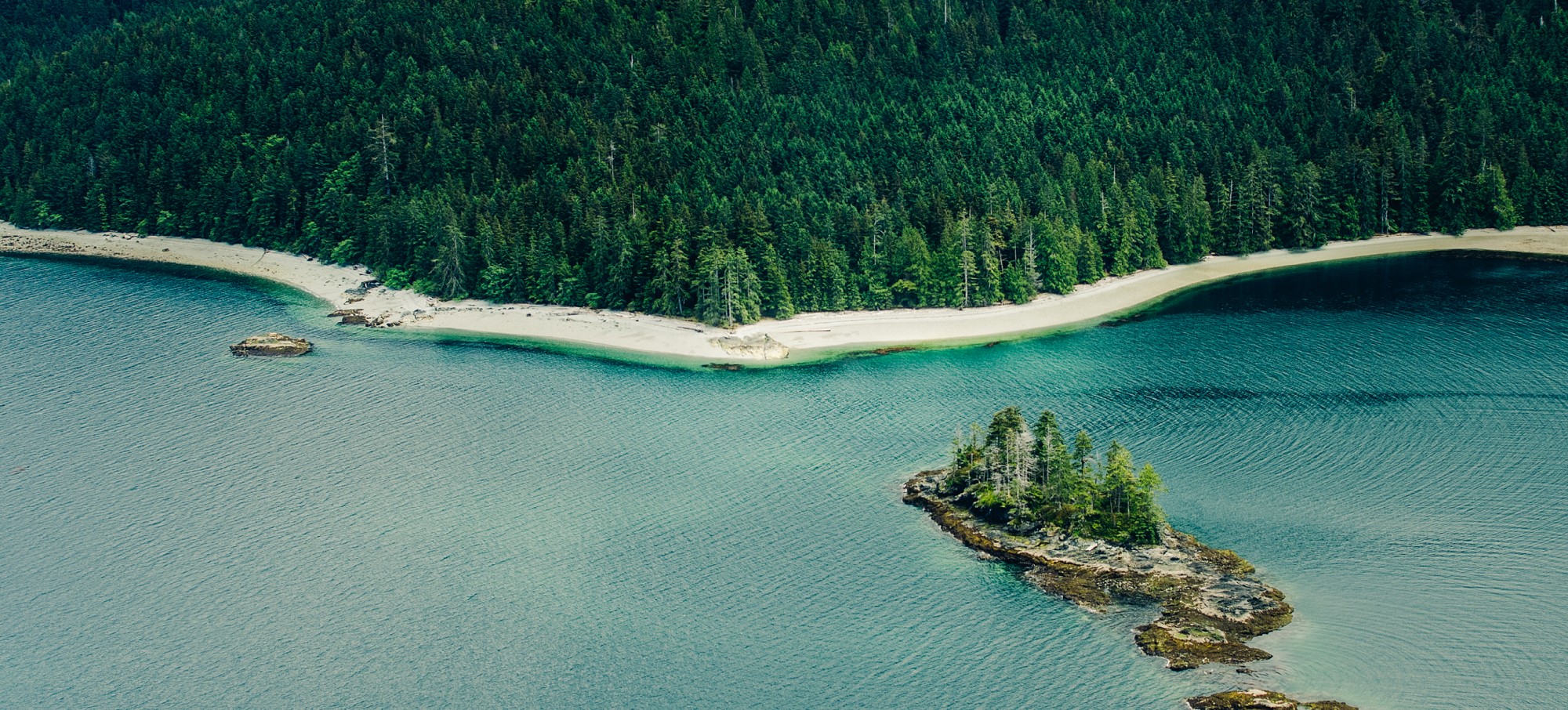Haida Gwaii Coastline, Photo Destination BC Owen Perry
Masset
Located on one of the larger islands in Northern BC’s Haida Gwaii, the village of Masset is the administrative centre of the Haida Nation. It is also a gateway to the northern region of Naikoon Provincial Park, a cultural and spiritual important area where evidence of settlements can still be found. Fishing, hunting and over 100 km of beaches draw visitors to this area.
Masset is home to the Northern Haida Gwaii Visitor Centre where knowledgeable staff can provide you with all the information you need to know about the Northern parts of Haida Gwaii. Some tours, adventures and attractions include: the Delkatla Wildlife Sanctuary, a migratory bird sanctuary and home to 140 species of birds at various times throughout the year. Trails and viewing platforms invite photographers, bird watchers and artists. View totem poles, sculptures, carvings and more at the various galleries and studios. The Dixon Entrance Maritime Museum is located in a restored heritage building where visitors can learn about the island’s maritime history. If you want to be out on the water you can take a fishing adventure or rent a surfboard, stand-up-paddle board, wetsuit, snorkel gear, and more.
Location
Masset is approximately 100 km (60 mi) west of the ferry terminal in Skidgate on Highway 16. Flights are also available from Vancouver, BC. The Haida Gwaii islands are located to the west of the northern BC town of Prince Rupert.
Step Back in Time
The history of the Haida Gwaii population dates back 12,000 or more years, when the last ice age created low water levels around the islands. By around 5,000 years ago, the Haida population had become quite sizeable, and the economy consisted of hunting, fishing, and harvesting shellfish.
The abundance of shellfish allowed the Haida to establish more permanent villages. These villages stored food, tools, and other resources. This also led to the development of craftsmen who could devote more of their time to art.
Juan Perez, and Captain James cook visited the island in 1774, and 1778 respectively but it was Captain George Green who surveyed the islands in 1787, and named them after one of his ships, the Queen Charlotte. Haida Gwaii, which translates to “Islands of the Haida People”, has since replaced the colonial name “Queen Charlotte Islands”.
The islands thrived during the 18th and 19th century as a fur-trading centre; however, the introduction of smallpox had reduced the population from 12,000 to 700 by the beginning of the twentieth century.


